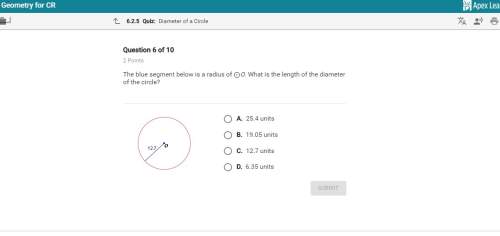
Mathematics, 26.04.2021 14:00, anaishindsp07emm
Q3. If I = (P × R × T)/100, find T if I = 80 Rs, P = 400 Rs., R = 10 Rs. (2)

Answers: 2
Other questions on the subject: Mathematics

Mathematics, 21.06.2019 18:40, rivera8
Juliana says that she can use the patterns of equivalent ratios in the multiplication table below to write an infinite number of ratios that are equivalent to 6: 10. which statement explains whether juliana is correct? she is correct because she can multiply 6 and 10 by any number to form an equivalent ratio. she is correct because 6: 10 can be written as 1: 2 and there are an infinite number of ratios for 1: 2. she is not correct because the multiplication table does not include multiples of 10. she is not correct because 6: 10 is equivalent to 3: 5 and there are only 9 ratios in the multiplication table that are equivalent to 3: 5.
Answers: 1

Mathematics, 21.06.2019 20:30, leeshaaa17
Which expression demonstrates the use of the commutative property of addition in the first step of simplifying the expression (-1+i)+(21+5i)+0
Answers: 2

Mathematics, 21.06.2019 21:30, coontcakes
Acd that is originally priced at $15.85 red-tagged for the sale. what is the sale price of the cd
Answers: 1
Do you know the correct answer?
Q3. If I = (P × R × T)/100, find T if I = 80 Rs, P = 400 Rs., R = 10 Rs. (2)...
Questions in other subjects:






Mathematics, 04.03.2020 23:45











